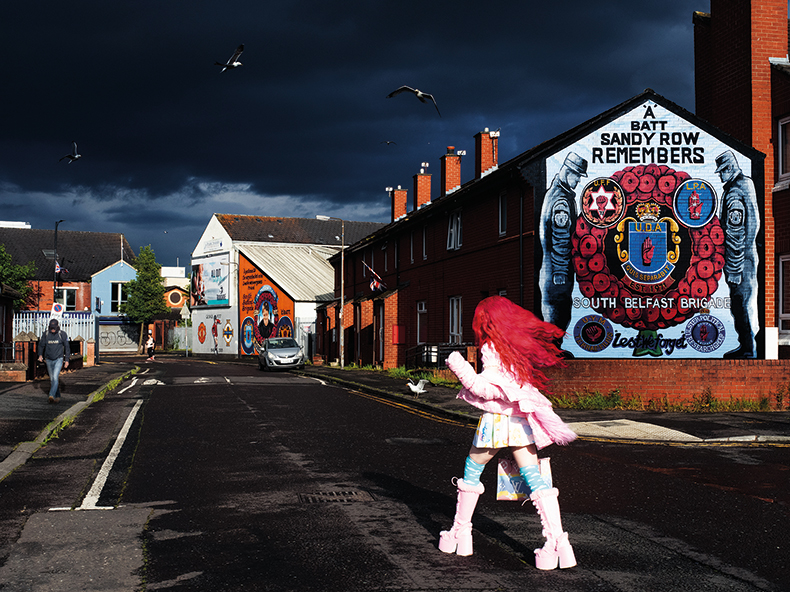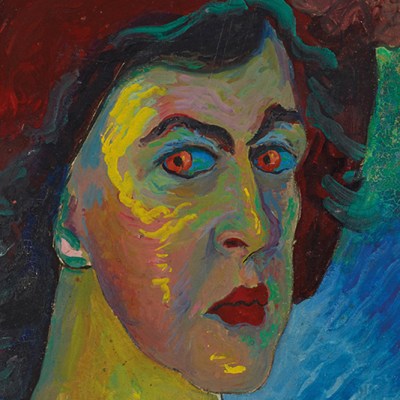From the February 2023 issue of Apollo. Preview and subscribe here.
How are we invited to see that character type – the girl – in art? Jean-Honoré Fragonard spies on her reading, thoughtful, trussed in white ruffles, mauve ribbons and lemon silk. Leaning into a plump cushion, she is a luxury object, a fancy cake, sweet and airy, to be devoured illicitly while her attention is caught by a little volume held lightly between fingers and thumb. Fragonard’s Young Girl Reading (c. 1769) is painted as pretty and rich, but neither she nor her book are named. She’s a fantasy confected by the artist.
We know even less about the pubescent prostitutes Egon Schiele painted – angular, awkward, naked or almost so – in fin-de-siècle Vienna. No ruffles and soft cushions here. Hovering unmoored within the white space of a page, their new breasts swell above ribs and hipbones prodding through taut greyish skin. These are girls that will let you look between their legs for money and paint it, too, if you like. Like Fragonard’s girl, they are objects to be consumed; nameless and enigmatic figures on to which all manner of fantasies might be projected.
The prostitute – an urban woman for whom relationships are transactional – is an archetypal modernist figure. So is the girl as fantasy object. On the borderline of sexual availability, she is often portrayed as the carrier of a secret (think of the mystic, knowing silence in which Gauguin enrobed the teenagers he painted in Tahiti) which the artist longs to access. The enigmatic passivity of the painted girl becomes a code for pleasure, promised or withheld.
Beta Naked (c. 1900), Ottilie Reylaender. Worpsweder Kunsthalle. Photo: Jörg Sarbach; © Estate of Ottilie Reylaende

I thought of Schiele and Gauguin’s girls while walking around ‘Making Modernism’ at the Royal Academy in London (until 12 February). This show is full of girls, many of them naked, all painted in the early years of the 20th century. In the work of Paula Modersohn-Becker, Marianne Werefkin and Ottilie Reylaender, they are objects neither of fetish nor fantasy. In Beta Naked (c. 1900), Reylaender presents a skinny child of about 12 years old sitting on a high-backed wicker chair. Her shoulders are pulled up – perhaps she’s cold – and her mouth is pursed beneath her large blue eyes. She looks stern. Beta is shown to us as a person rather than a symbolic object – how uncomfortable the coarse fibre seat must have been under her naked legs.
Werefkin paints an anonymous girl in a blue dress as a monumental figure. Standing against a turbulent red background, eyes closed, she might be listening to music: the enigma of her face is not sexually coded, she is simply lost in her own thoughts.
The Dancer Alexander Sacharoff (1909), Marianne Werefkin. Fondazione Marianne Werefkin, Museo Comunale d’Arte Moderna, Ascona

The girls painted by Reylaender and Modersohn-Becker were rural children living near the artists’ colony of Worpswede in Lower Saxony. With the advent of psychoanalysis, childhood development inspired a new fascination. As young women, these painters would have seen in the girls a reminder of their own recent past, and a foreshadowing of their possible future identities as mothers (with all the discomforting implications that carried for their identities as artists). The relationship between artist and model was transactional – Modersohn-Becker recorded her embarrassment at paying girls to sit – but there seems to have been no expectation that the model would perform for the artist’s pleasure. In Modersohn-Becker’s Seated Nude Girl, Her Legs Pulled Up (c. 1904) the model bears an expression of chilly resignation. In the magnificently still and sculptural Portrait of an Italian Girl (1906) the subject is caught smiling thoughtfully, her eyes directed away from us.
The expectation that a girl will perform for whoever looks at her – that she will please – is a convention that endures, and not only for those of us whose young womanhood was soundtracked by the builder’s call of ‘Cheer up love, might never happen!’ Reviewing an exhibition of Hannah Starkey’s work in 2000, one critic noted ‘the listlessness and torpor of the girls’ expressions’ in her photographs. The young women were not smiling or responding to the camera: ergo, for that critic, they were unhappy.
Untitled May 2022 (2022), Hannah Starkey. Courtesy the artist, Maureen Paley, London and Tanya Bonakdar Gallery, New York/Los Angeles; © Hannah Starkey

In her current show at the Hepworth Wakefield (until 30 April), Starkey notes how strange it is that an unsmiling girl or woman is assumed to be burdened with bad feelings: she is not allowed to be immersed in a rich interior world. The girls in her photographs are apparently thinking about anything but the camera. One watches a friend as she sleeps in her party dress on the sofa beside her, a plastic pint glass drooping from her hand. Another stares over her mother’s shoulder in a pub booth. Starkey’s not immune to using girls as symbolic objects. In a striking recent work, a girl in extravagant manga costume strides up a road in Belfast, her cartoon-pink hair blazing beneath storm-black clouds. She is a fantasy figure, but a self-constructed one. The symbolism she carries – of feminine energy, bright against the patriarchal back- drop of Ulster Defence Association murals – hardly seems imposed.
Starkey worries a lot about the image culture surrounding young girls. We may have shifted from painting to social media, but certain conventions cling on. This is unhappy testament to the limited impact of feminist photographers, such as Jo Spence, and the work they did in picking apart the expectation that the female subject of an image should please. The message young women receive from our current image culture is that to be prized they must be – like the reading girl – all prettiness and performance: objects to be consumed, ever alert to the possibility that they are observed.
From the February 2023 issue of Apollo. Preview and subscribe here.



